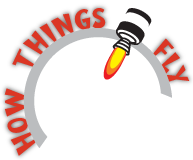Ask an Explainer
Q:
What does the propeller actually do and does it affect the aircraft's aerodynamics?
A:
A propeller generates thrust to help the airplane move through the air. Typically the engine is used to turn the propeller which then uses Bernoulli's principle to create trust. A propeller will affect the aerodynamics of the aircraft by changing the way the air is moving around the front of the craft.

Posted on September 1, 2017 at 3:16 pm
Categories:
